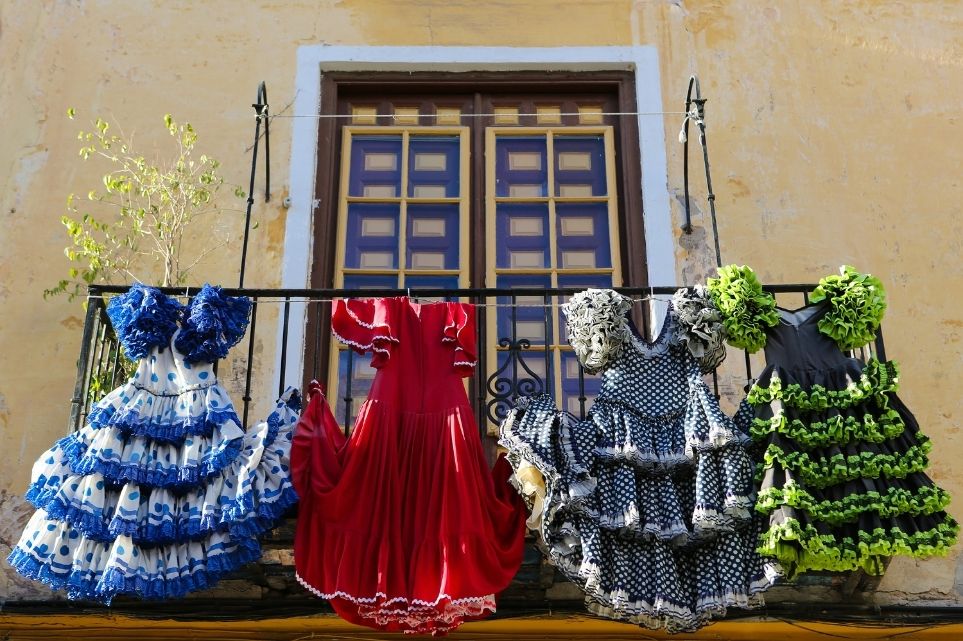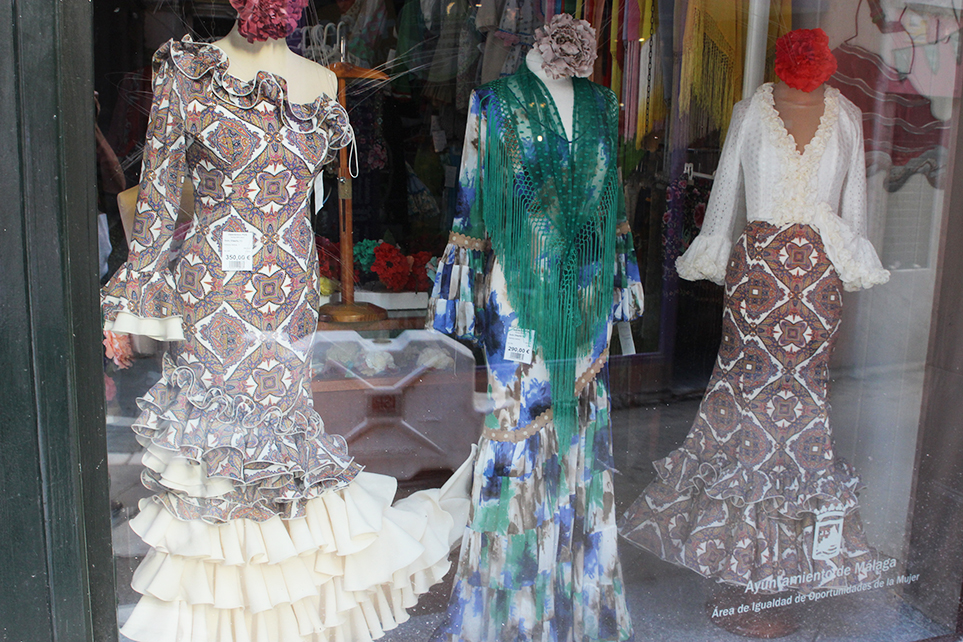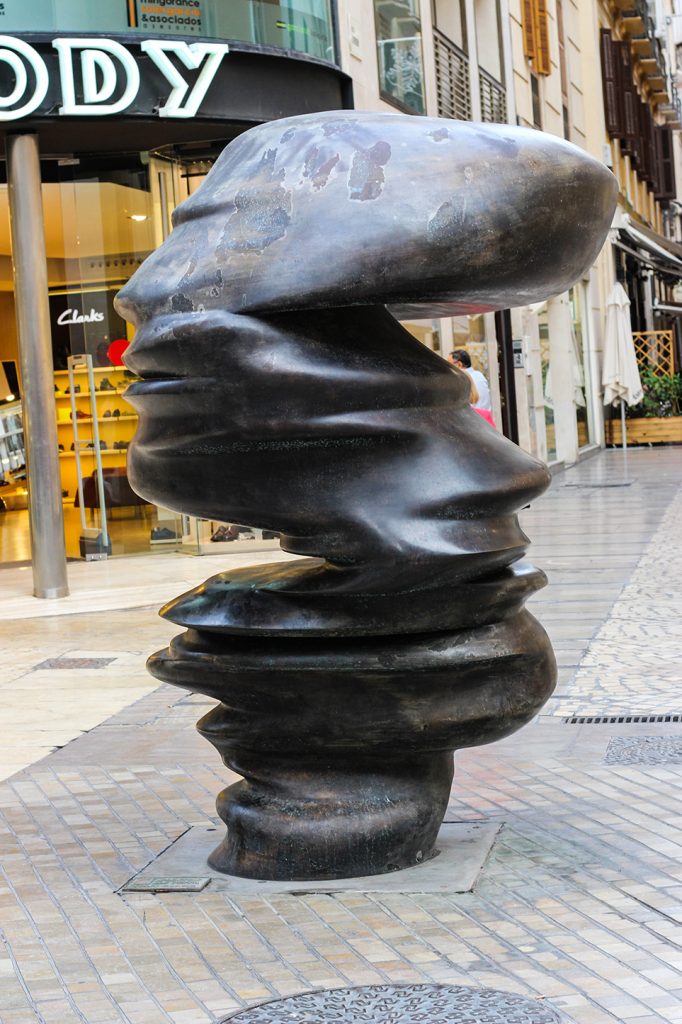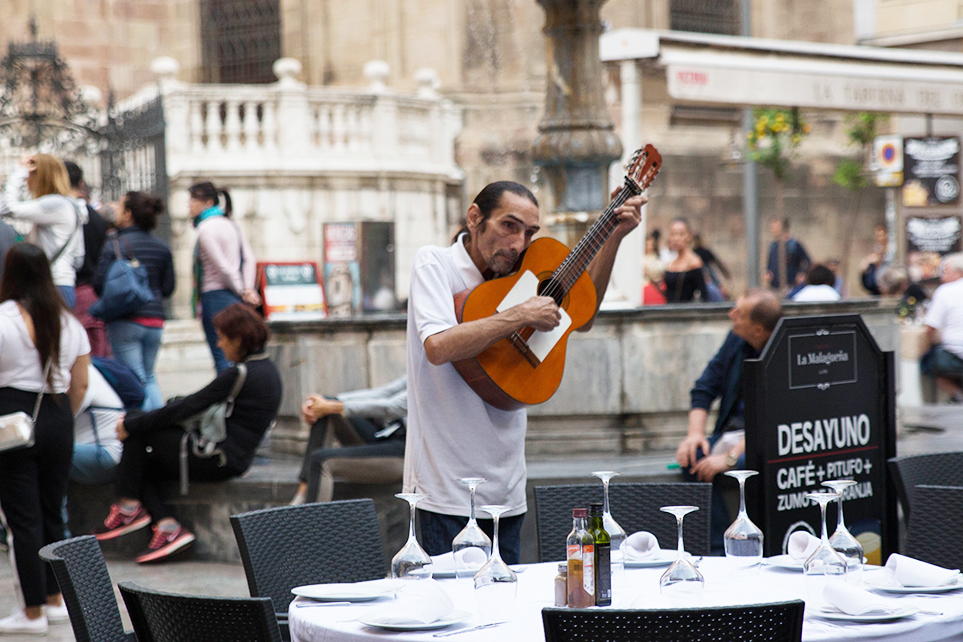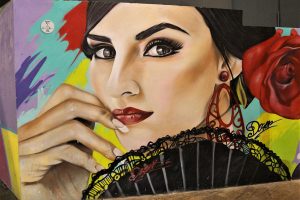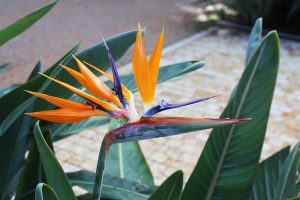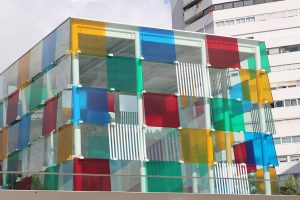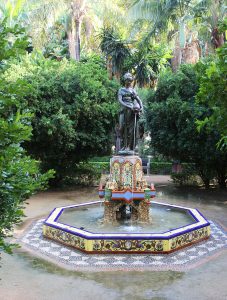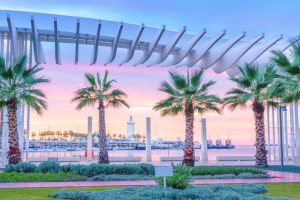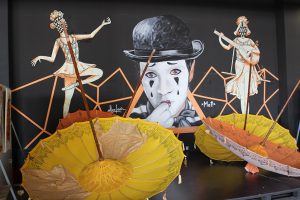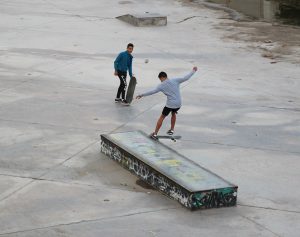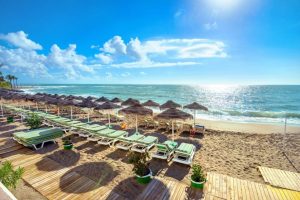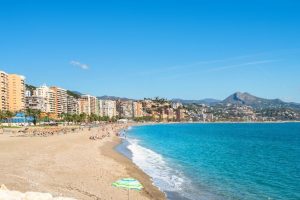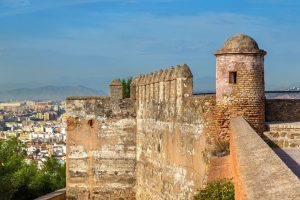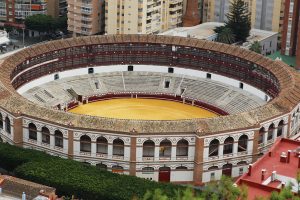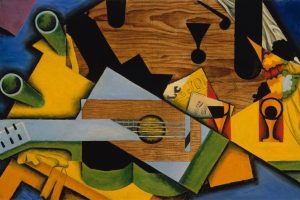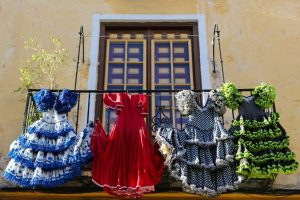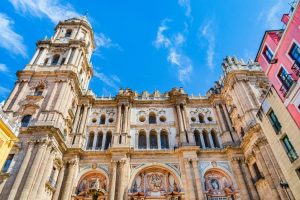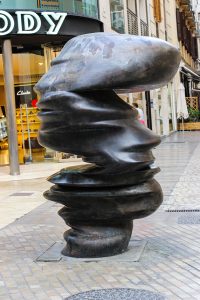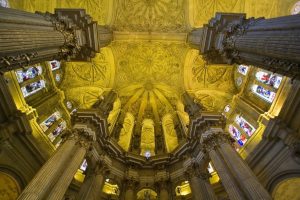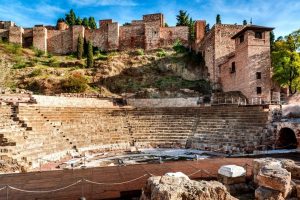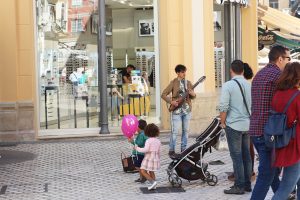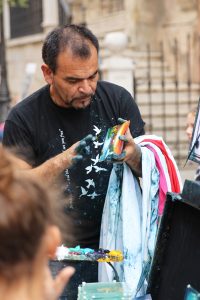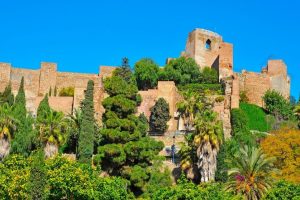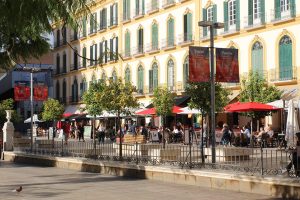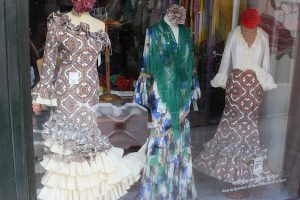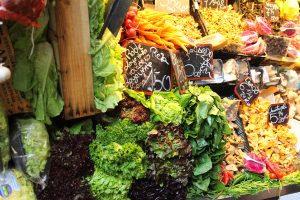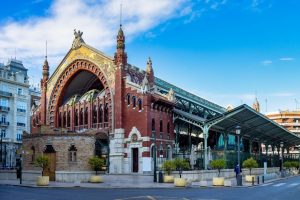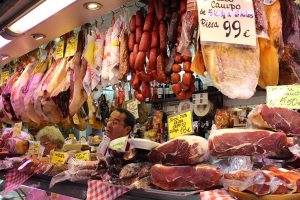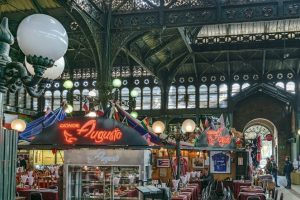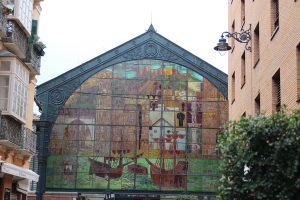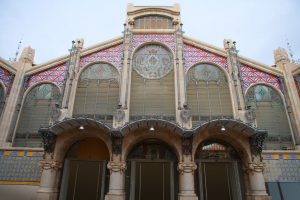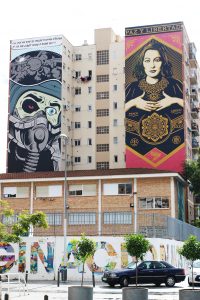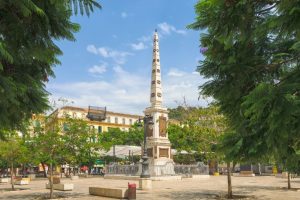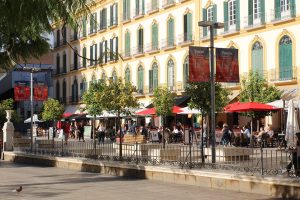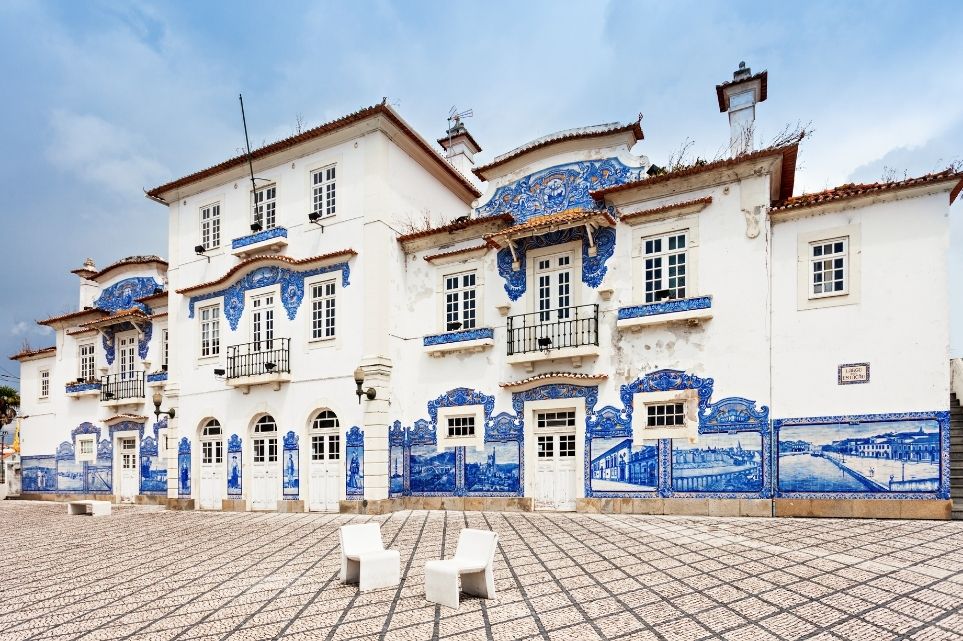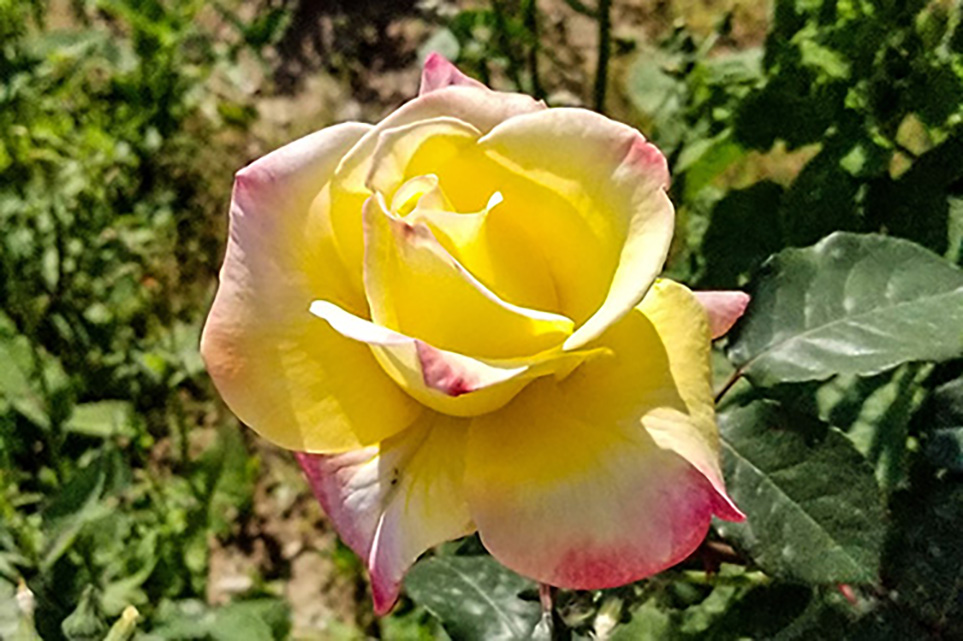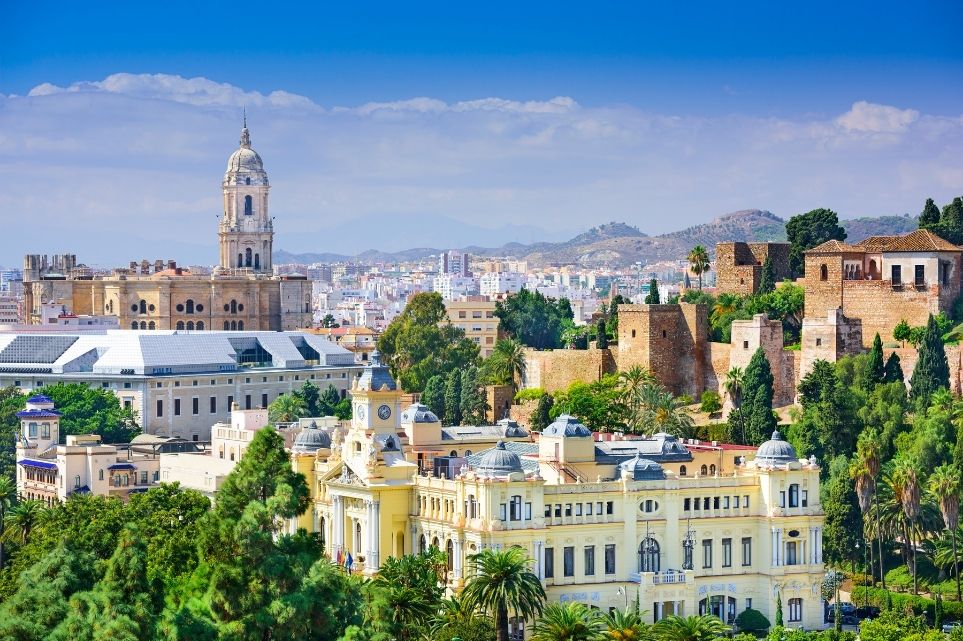
In the heart of the Costa Del Sol is the sunny city of Malaga, one of the most visited cities by tourists from all over the world for a summer holiday, and is certainly one of my favorites! We scheduled our trip for November, during the low season, and the weather was a mild 70 degrees. It was perfect! With trendy tapa bars, Malaga is full of culture, art, and history.
Getting Around
Made up of ancient cobblestone streets, Malaga is designed for walking. Although we rented a car from Hertz, we used it rarely while staying in the city. If you prefer not to walk, buses, Uber, and taxis are available to get you where you need to be in the city.
Where to Stay
Malaga offers many hotel options that are in the city center. We rented an apartment through Solaga, a vacation rental agency. The apartment was beautifully decorated and comfortable. We enjoyed the small market nearby, where we could buy fresh vegetables, milk, eggs to make a few of our meals.
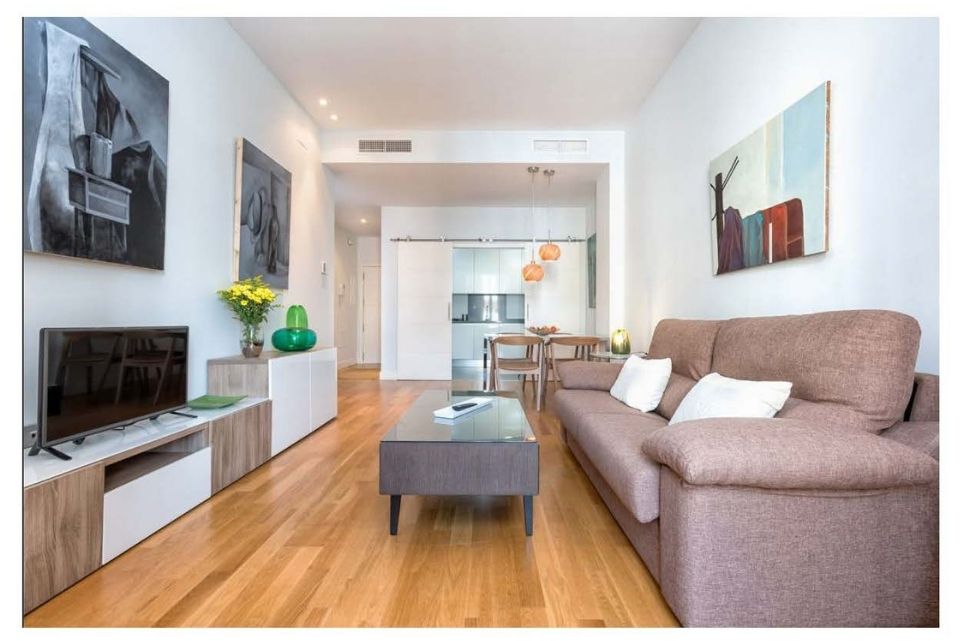
History
Malaga has over 3000 years of rich history, while each generation was leaving its stamp of culture and traditions behind. In 7 BC, the Phoenicians founded a commercial center called Malaca. In its Roman period, a remarkable amount of development took place in the city. In the 8th Century, Spain once ruled by Arabs, which expanded and developed the trade market. However, Malaga was one of the longest governed Muslim Iberian cities, retaken by Christian forces in 1487. Much of the historical sites depict the Islamic architecture built during the Moor period and are still standing, open to tourists to enjoy.
Markets
Throughout the city are many open markets to shop for fruits, vegetables, cheeses, and other homemade goods.
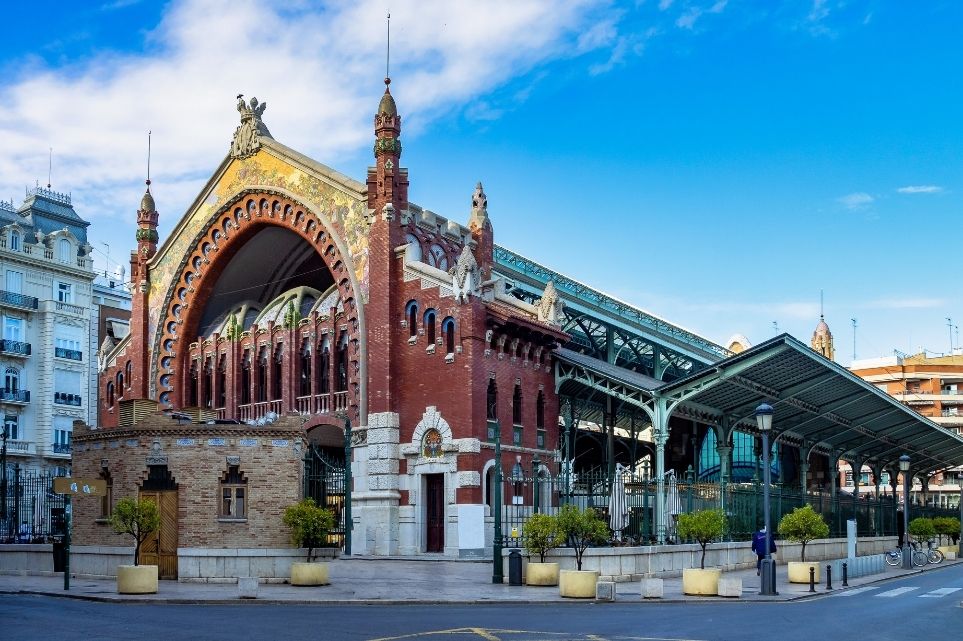
Ovo Moles
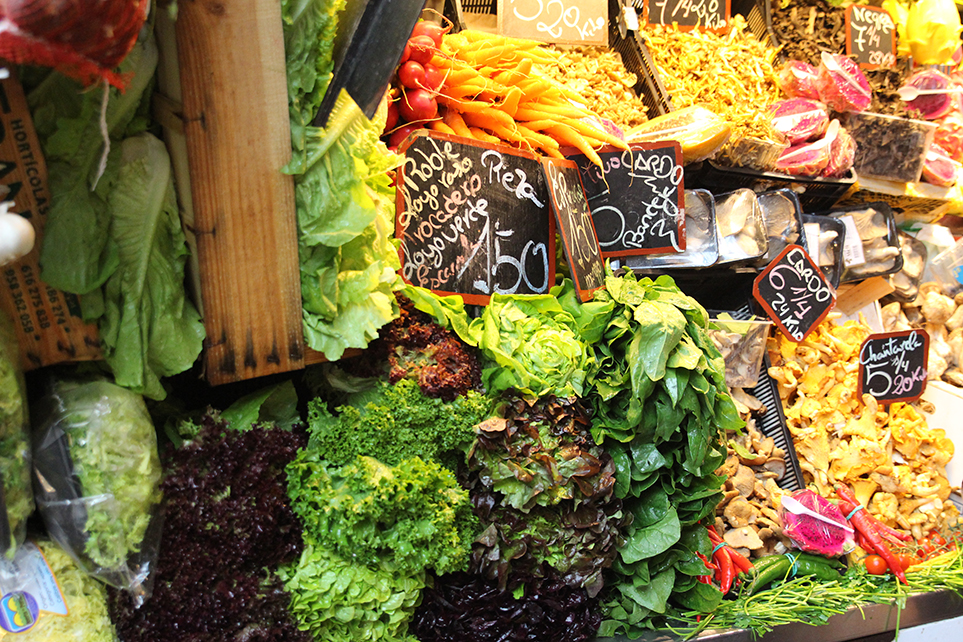
Casa da Ovo Moles
The Mercado Central de Atarazanas is the best-known market in Malaga. We lucked out because our apartment was located right around the corner from this market. The market’s entrance has the most impressive horseshoe archway in off-white marble, the only remaining part of what was once a tremendous seven-arched shipyard. “Atarazanas” (translates to arsenal) was where military ships in the 1800s were built and repaired. At the back of the market is a massive stained-glass mosaic illustrating the history of Malaga’s city.
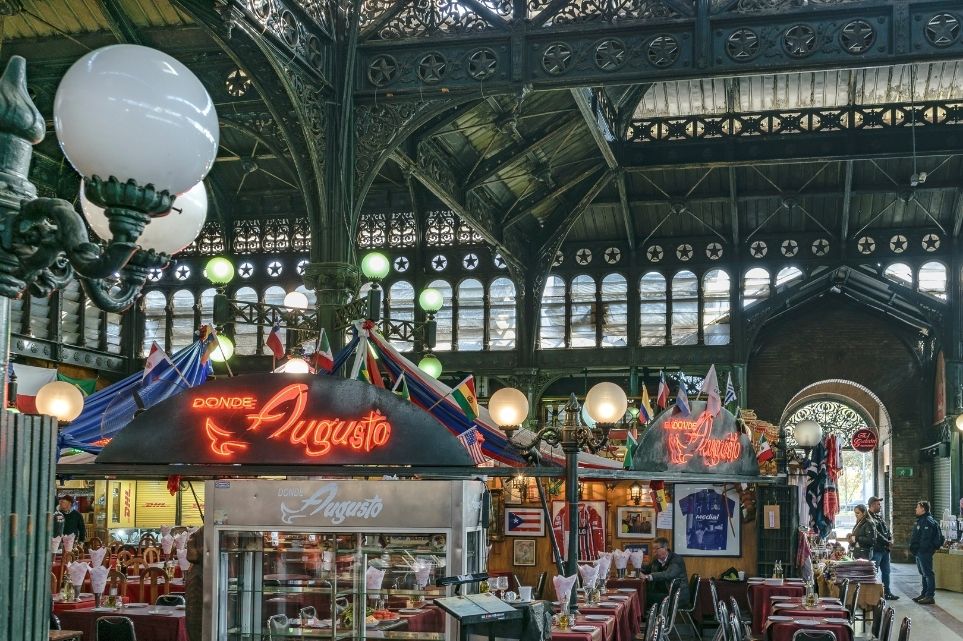
Inside the Mercado
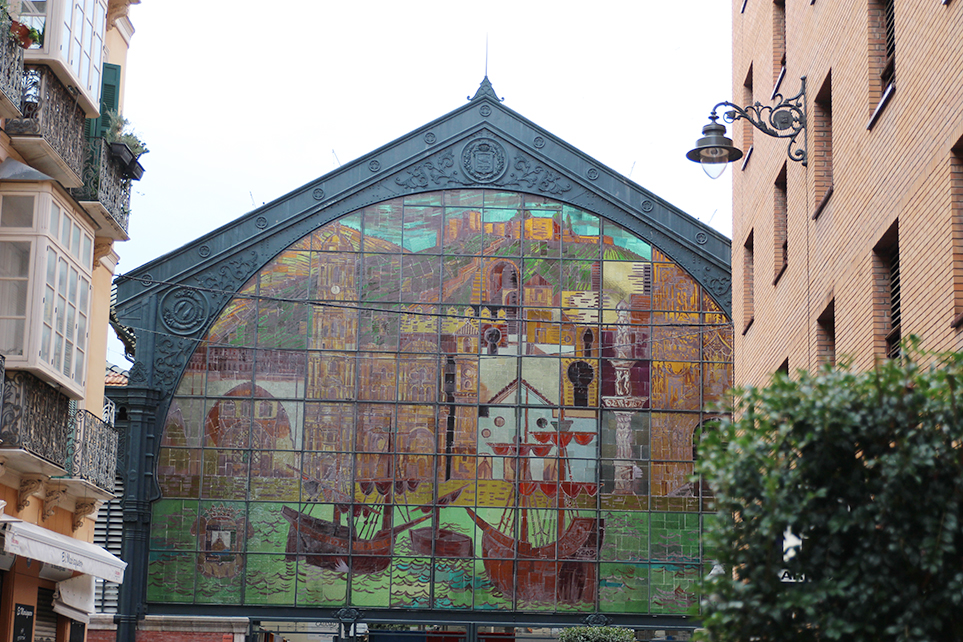
Mercado Central de Atarazanas
Locals and tourists walk from stall to stall, admiring the produce and products being sold. Throughout the market, vendors are selling prepared food to either be eaten there or for delivery.
This market is open 8 am – 2 pm Monday- Saturday
Address: Click Map
Shopping
Malaga’s city center is the place to fulfill your shopping needs. Due to the boom in tourism, they have added many modern designer brand stores. With the numerous shoe store options, I made several purchases of genuine leather shoes made in Spain. They have become one of my most favorite comfortable shoes today!

My husband bought a couple of designer dress shirts. I also bought a pair of stylish black leather men boots for my son.
If you are looking for souvenirs, purchase one of the beautiful Spanish fans or a colorful shawl with fringe to wear for a party or special event. Many souvenir shops are available to browse in the city center.
My suggestion is to bring an empty suitcase because you’re likely to find many unique and quality items you will want to bring home.
Flamenco Dancing
One of Spain’s most traditional dancing performances is the flamenco. Flamenco dancing performances occur throughout the city at various venues or on the streets. Flamenco dance lessons are offered throughout the city.
I admired the gorgeous flamenco dresses displayed at many of the shops throughout the city. I was tempted to purchase one, but I chickened out!
Walking the Streets
With limited car access to many city center streets, everyone walks to enjoy the shops, cafes, and tapas bars. Locals in Malaga spend a great deal of time socializing, celebrating life, drinking wine or coffee, and listen to music. from street performances.
Calle Larios is the main artery in the city center and a host to many events. During November, Calle Larios was decorated with holiday lights as Christmas was fast approaching.
Check out the sculpture created by Tony Cragg called the “Point of View,” located at the junction of Calle Larios and Calle Strachan.
In the evening, creative mime artists, magicians, and musicians line the streets to entertain onlookers. Stop and admire their craft as they perform.
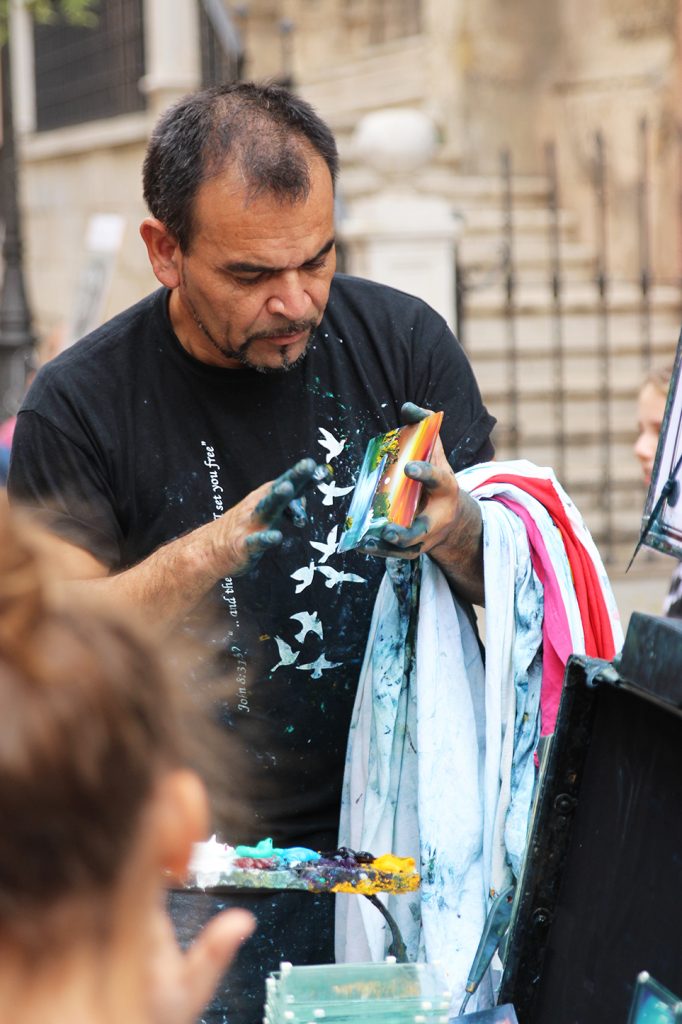
Church of Carmelitas
Plaza de la Constitucion is a central area where you can find art, craft shows, dancers, and musical performances.
An excellent ending to our evening was at Plaza del Obispo. We grabbed a table outside, ordered a glass of wine, and sat there to observe the Cathedral of Malaga’s impressive façade and marble while listening to musicians perform in the plaza.
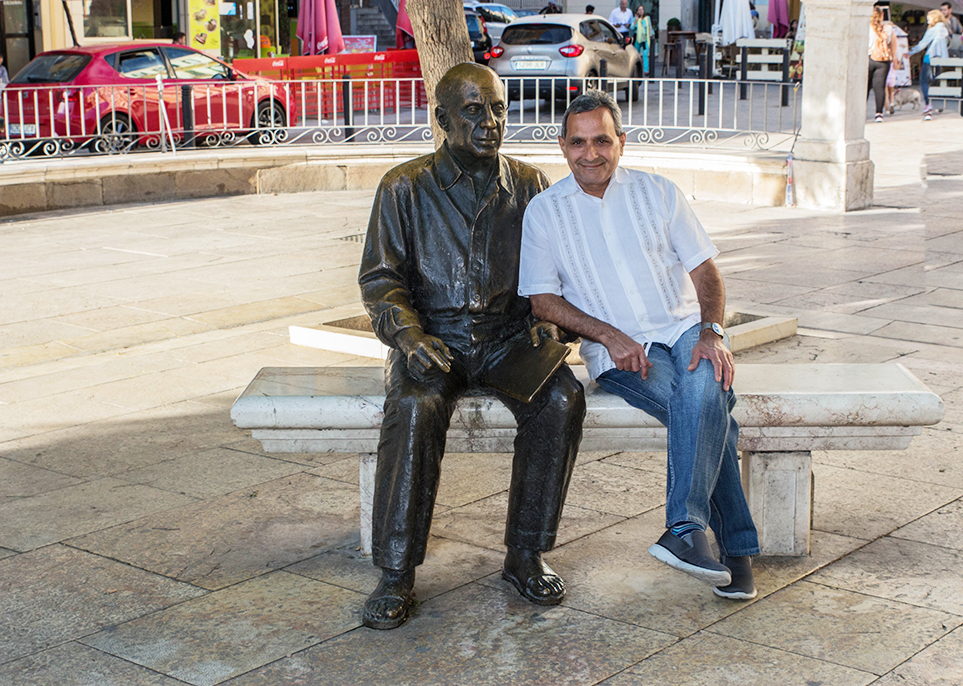
Aveiro Train Station
Explore the History
Cathedral of Malaga
The Cathedral of Malaga was built in 1530 but failed to reach completion due to a lack of funds. The building is missing a tower and therefore was known as “La Manquita,” which means one-armed woman. Renaissance architecture is full of beautiful details and fantastic design. Grand artwork fills the sanctuary, such as the Gothic altarpiece of the Chapel of Santa Barbara and the 16th-century tombs of the Chapel of San Francisco. One of the most important works of craftsmanship is the 42 carvings in the choir. Two functioning 4,000 pipe organs are beautiful examples of the 18th Century musical instruments to witness.
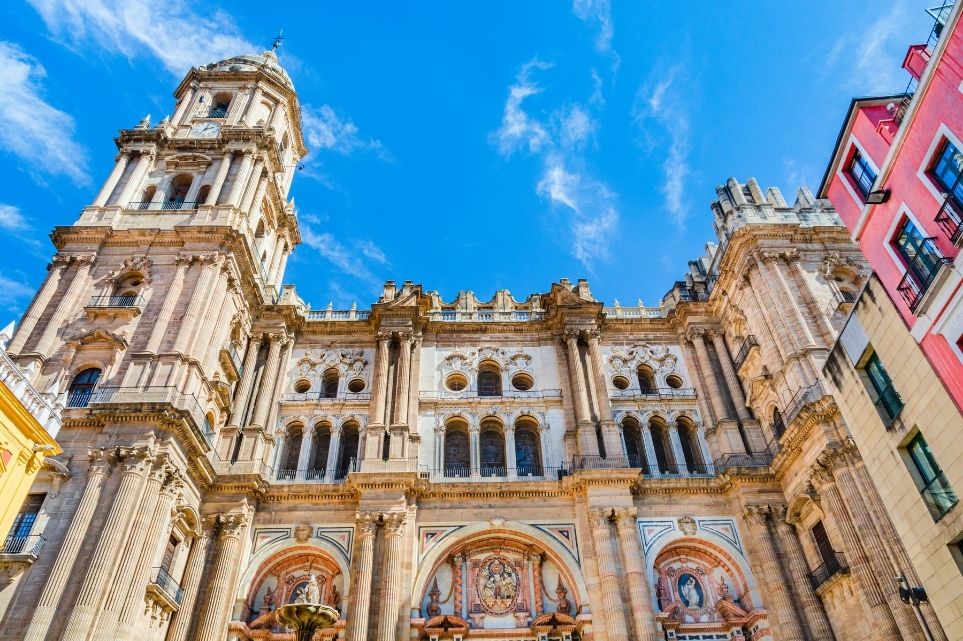
Clerigos Church
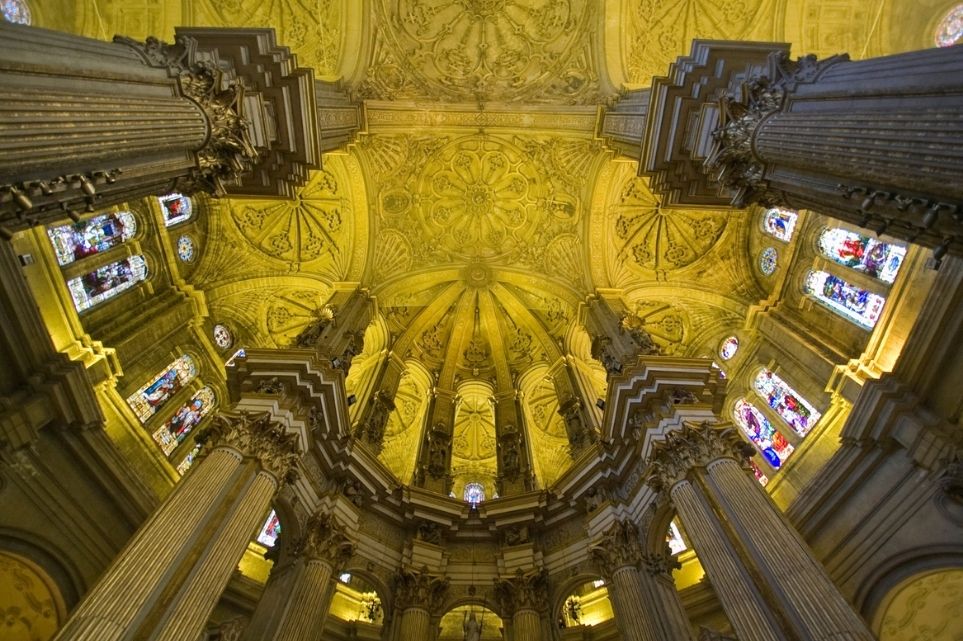
Clerigos Tower
Roman Theater was built in the 3rd Century, is one of the oldest monuments in Malaga. Hidden under the dirt for decades was the Roman Theater. After being unearthed, today is used for what it was initially designed to provide entertainment to all.
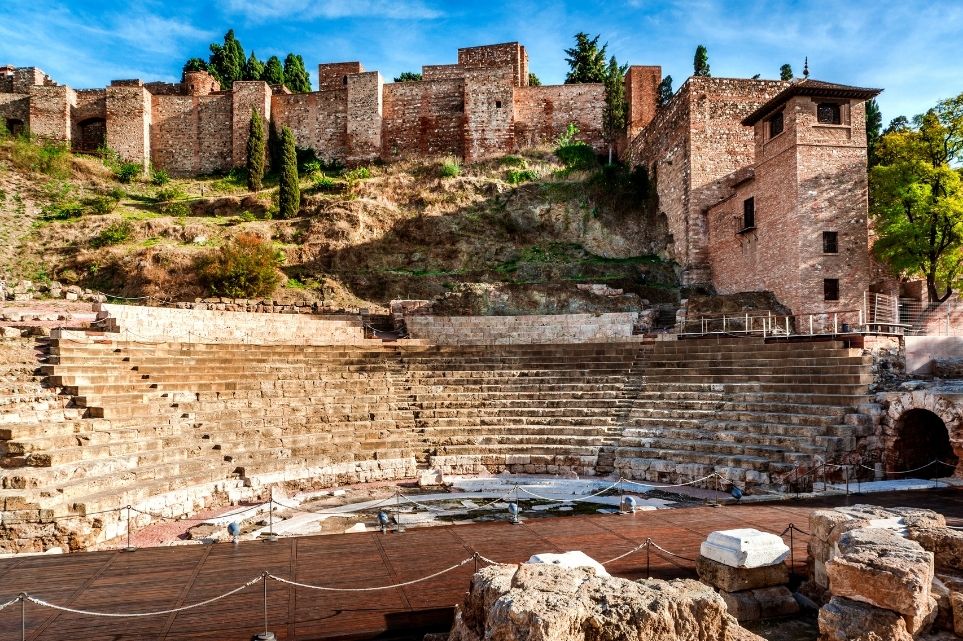
Roman Theater

Alcazaba
Alcazaba, which sits at the top of the hill, behind the Roman Theater, is one of the Moorish fortresses’ remains that overlook the city built in 756-780 AD. It was designed to protect the city from pirates and allow them to see as far as Africa of oncoming intruders. Strolling through various rooms and gardens of the fortress, we reached the terrace overlooking Malaga. From the balcony, you can see Malagueta Beach, the port, and the Plaza de Toros.
- Note: We went on a guided tour.
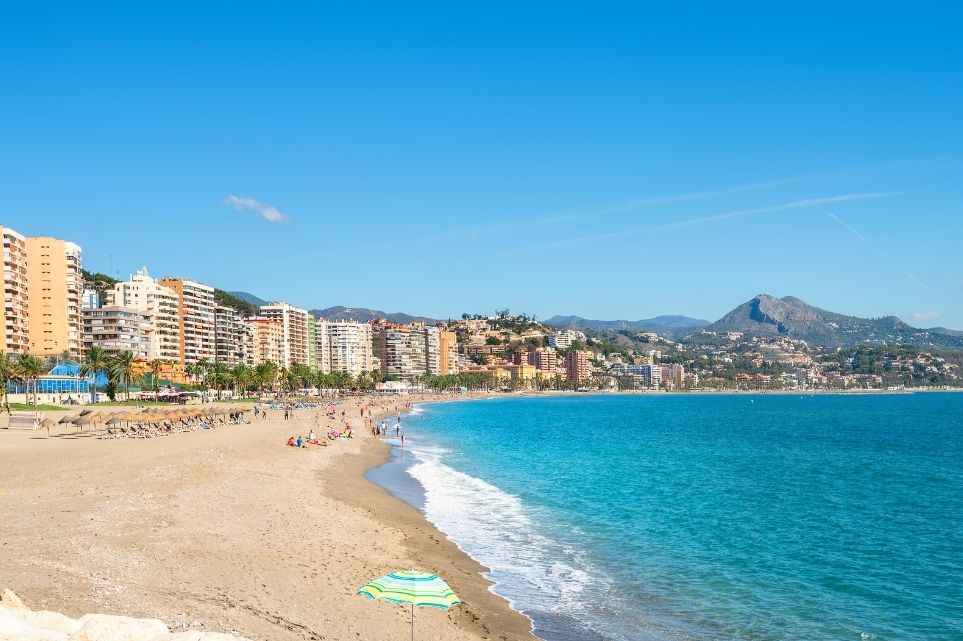
Malaga Beach
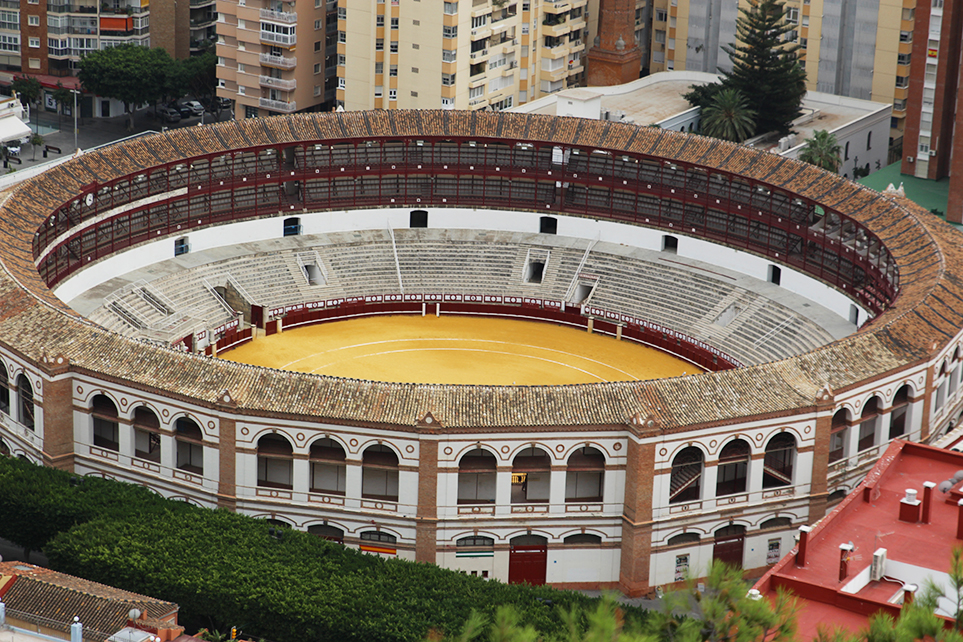
Plaza de Toros
Gibralfaro Castle dates back to 929AD. It was expanded in the 14th Century to protect the Alcazaba. The castle is famous for withstanding a three-month siege by the Catholic Monarchs that ended only when the inhabitants ran out of food. Narrow pathways that align the outer walls are a great place to admire the view of Malaga.
- Tour: Viators (Suggest taking a tour because no markers to give you information)
- Tickets: When you purchase your ticket to Alcazaba, it can include the Gibralfaro Castle.
- Note: Wear walking shoes (no sandals), bring water. The walk up the hill is steep.
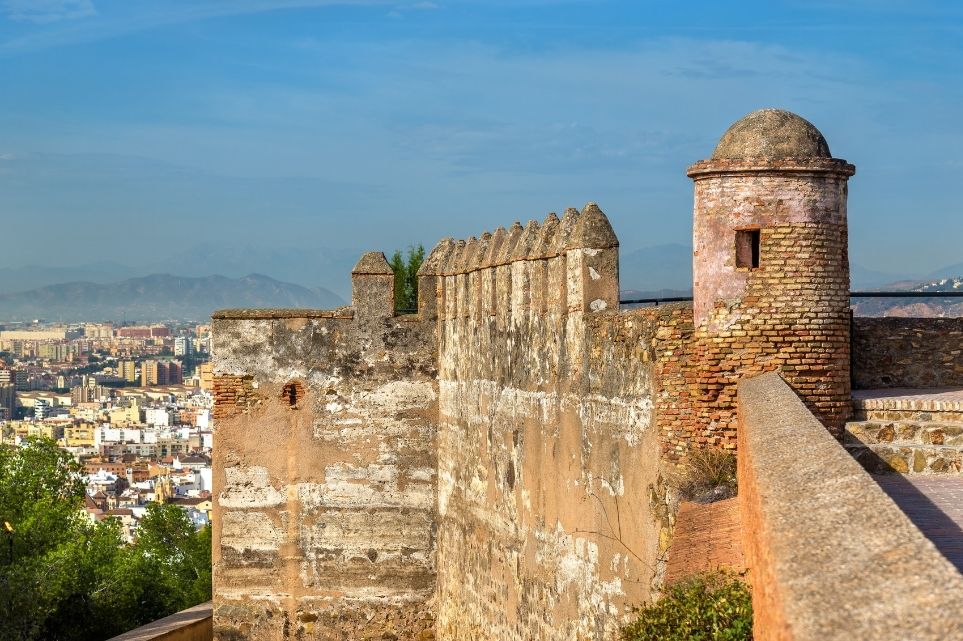
Gibralfaro Castle
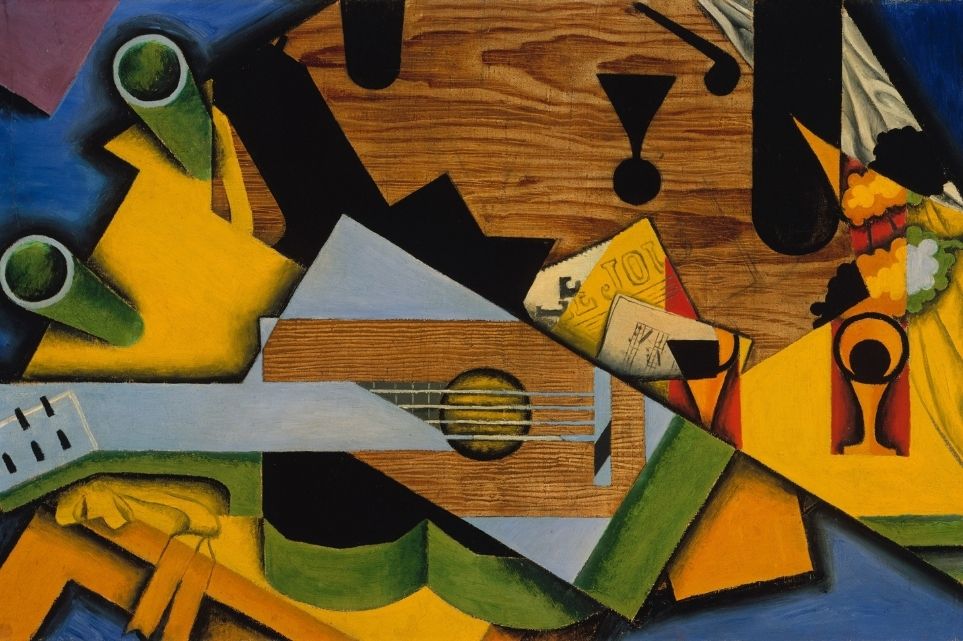
Picasso
Picasso Museum is where you will find one of the most world-renowned artists in the world, Pablo Picasso. Throughout this museum are many pieces of his artwork displayed telling of what inspired his creation. Eight decades of Picasso’s art can be viewed, created between the 1890s and 1972.
- Open daily 10 am-7 pm, $10 per person.
- Location: Click Map
Parks
Located between the old town and the new port is Malaga Park. The park is full of exotic tropical plants. It was built in the 1890s, designed as a refuge from the city’s hustle and bustle, and today as become home to native birds. Throughout the park are beautiful bronze water fountains with colorful Spanish style benches.
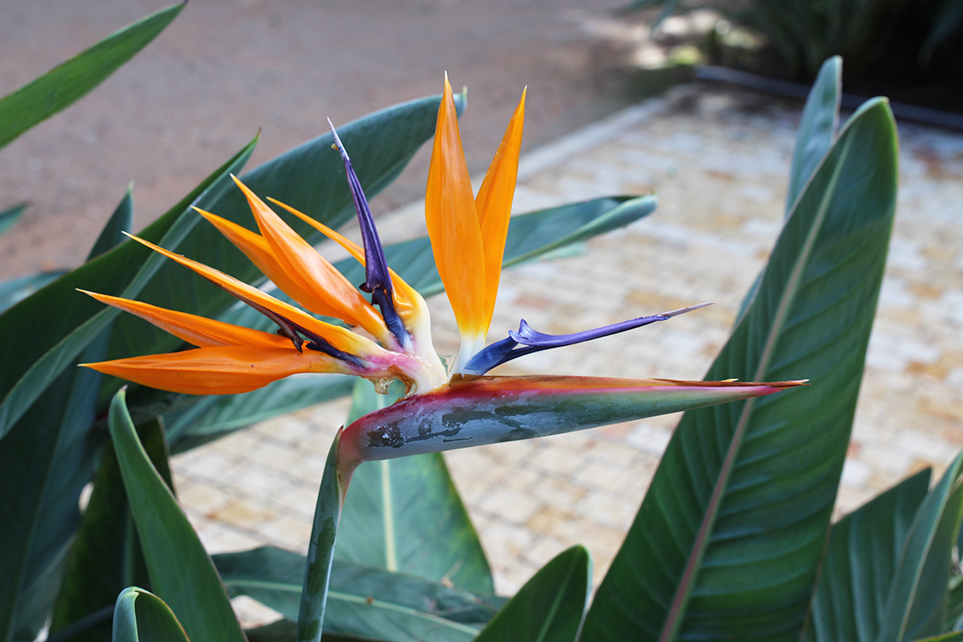
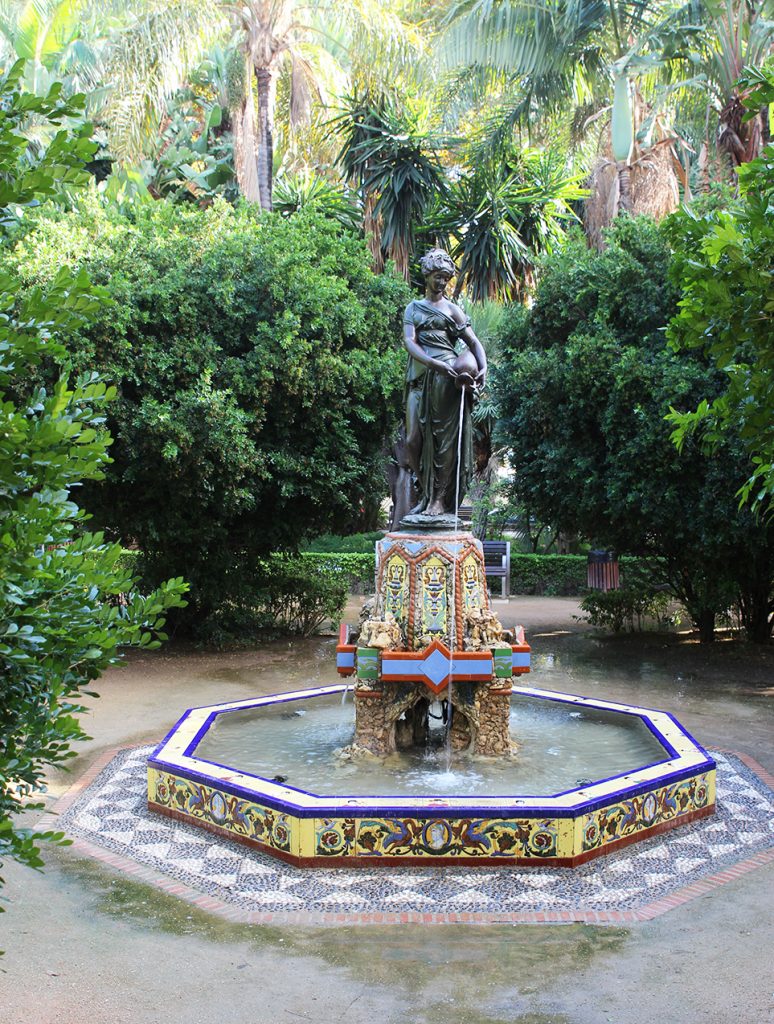
Pier Walk and Beach
Malaga is a port city with many visitors that cross the Strait of Gibraltar from Morocco. To improve the shipping dock area, the city transformed the shipyard, calling it Muelle Uno, adding restaurants and shops to attract tourists.
Located at Quay 2 (Pier 2) is a stunning architecturally design pergola called The Palm Grove.


If you are lucky, the El Zoco monthly market day event may be open, selling handmade crafts and jewelry, and art along with organic foods.
Visit the Pompidou Centre. This colorful cube structure is a gallery of modern art. Next to the Pompidou Centre is a small outdoor artesian exhibit where we discovered some fascinating art pieces.
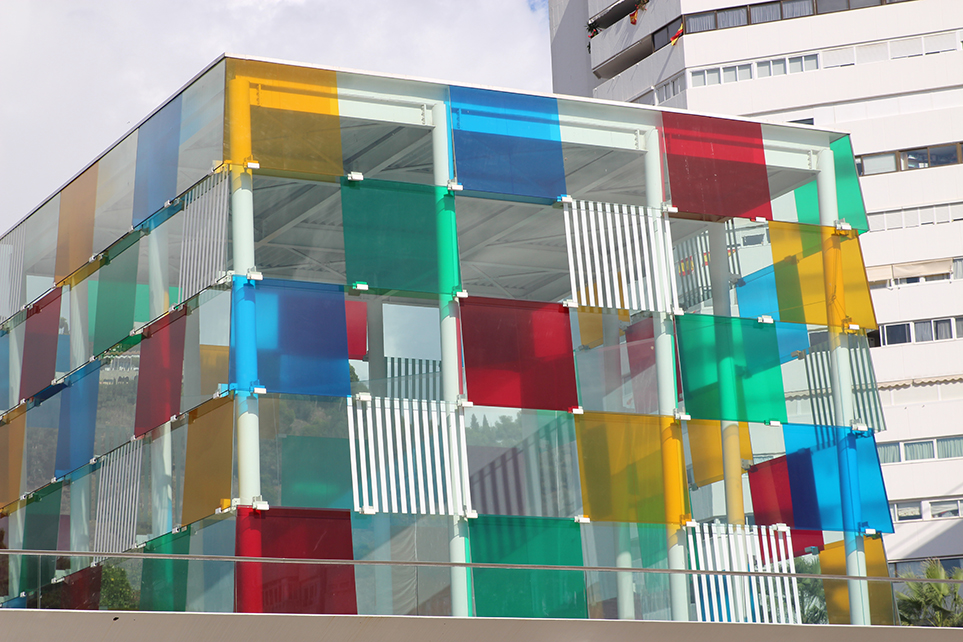
Pompidou Cantre
Malaga has its all-historical sites, cultural exhibits, salsa music, a mixture of restaurants, and beautiful beaches. Playa de la Malagueta is one of the most popular with locals.
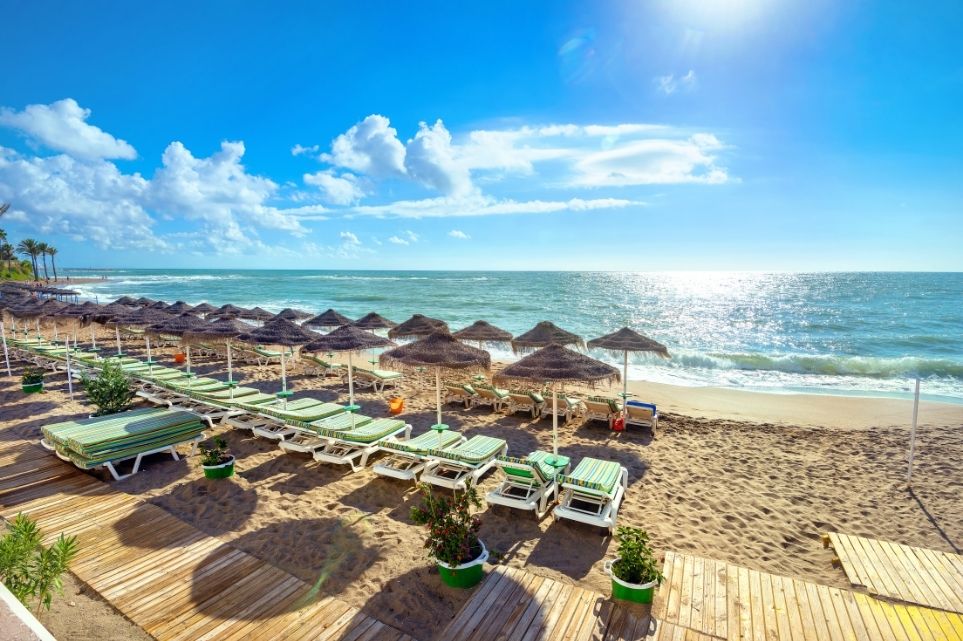
A seven-mile boardwalk aligns the beach area for those that want to go for a walk or run.
- Note: Feet watching stations and public restrooms are available along the beach.
Street Art
Street art can be found throughout the city streets. Most street art is in SoHo or also known as Art Neighborhood, near the Guadalmedin River.
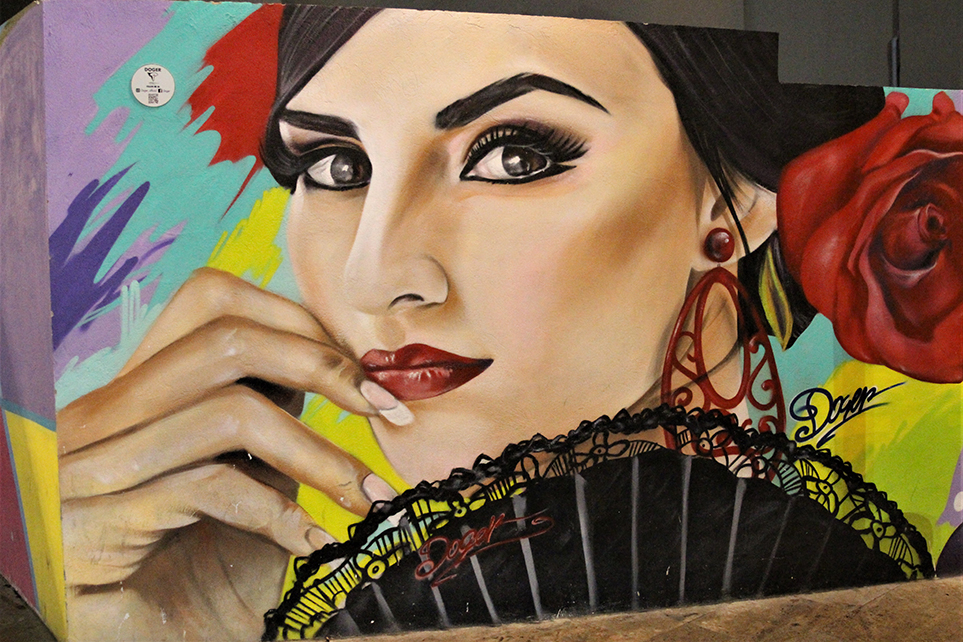
Since the river is dry, the graffiti artist has painted murals along the riverbank walls. You can learn about several of the artists by visit MAUS. Walk around the Center for Contemporary Art to see more wall art.
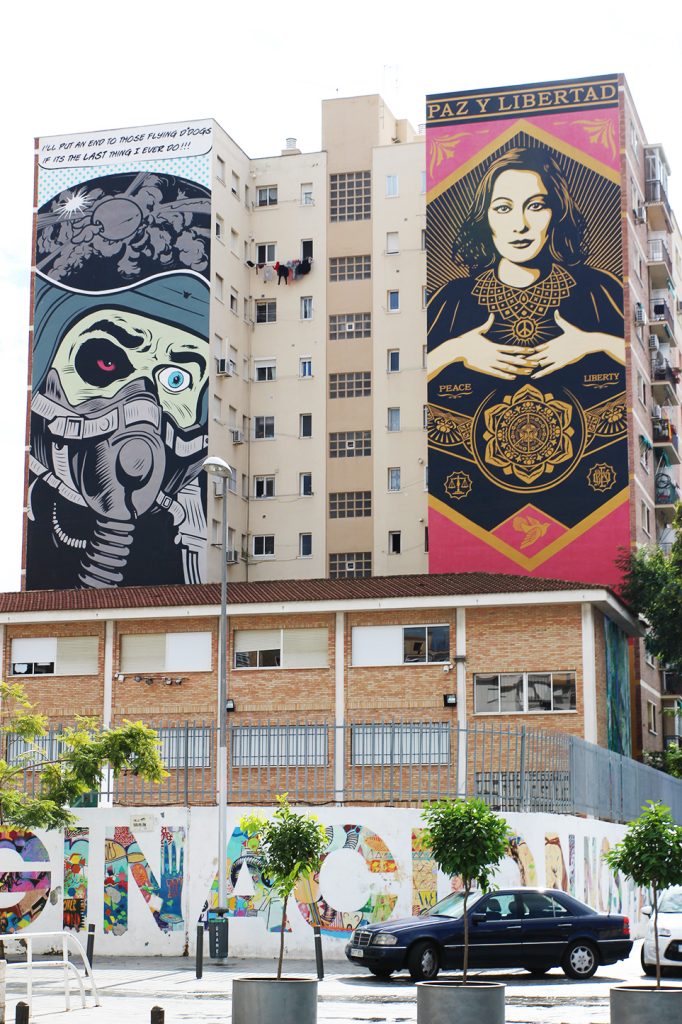
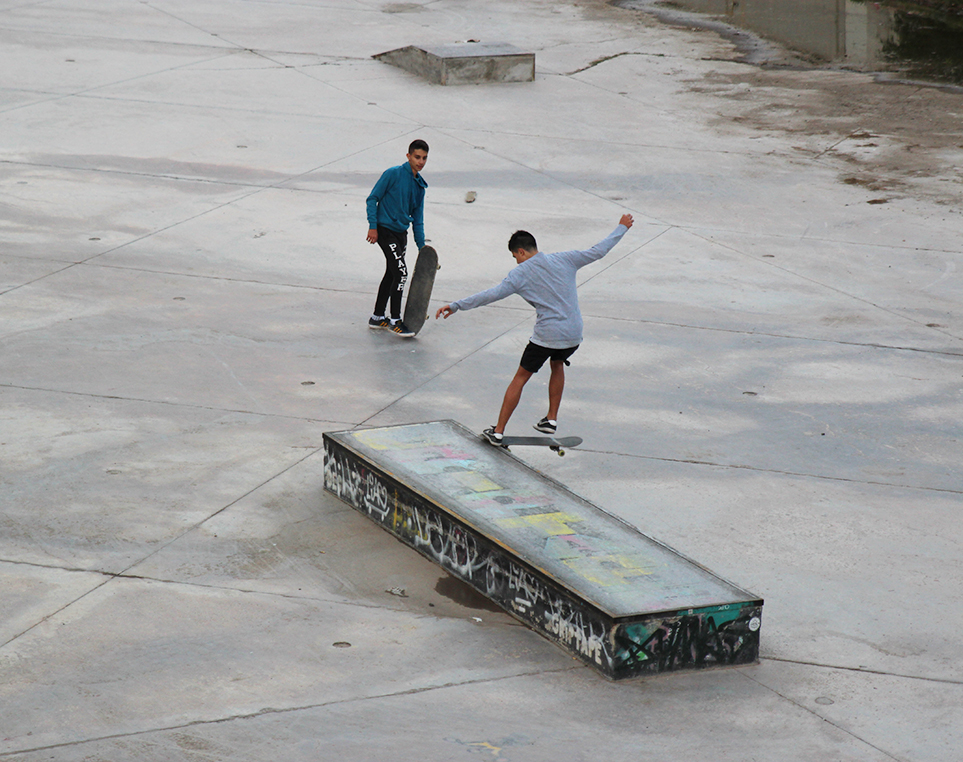
Skateboarders have utilized the dry Guadalmedina River to practice skating and performing tricks.
Monuments and Statues
Located at the Plaza de la Merced is Torrijos Monument. The towering obelisk was built to commemorate General Jose Maria Torrijos. At the base of the monument are the general’s crypt and his honoring soldier’s remains. They were executed when General Torrijos and his men rebelled against Ferdinand VII in the 19th Century.
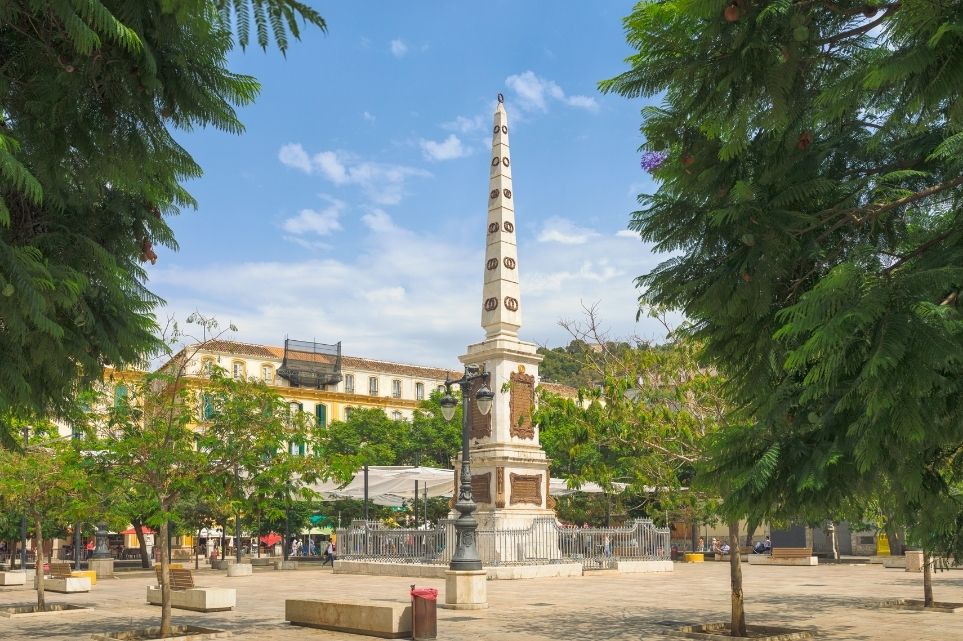
While visiting Plaza de la Merced, we discovered a bronze sculpture of Pablo Picasso sitting on a stone bench, sketchbook in hand, looking out over the square. This area is where Picasso grew up. Sit alongside Picasso to have a photograph taken just as Omar did here.
Dining Experiences
Be prepared to eat late. Lunch is typically served around 2:00 pm, which means tapa bars and restaurants open around 8:30 pm. Usually, Spaniards eat dinner around 10 pm. Don’t be surprised if you see families with small children out after 11 pm on a school night
Midday Breaks
Don’t expect to get service from any shops or restaurants as it is common to take a mid-day break around 2 pm to 5 pm. The most important meal of the day in Spain is lunch. Most Spaniards travel home during mid-day, rest, and return to work. Plan your itinerary accordingly.
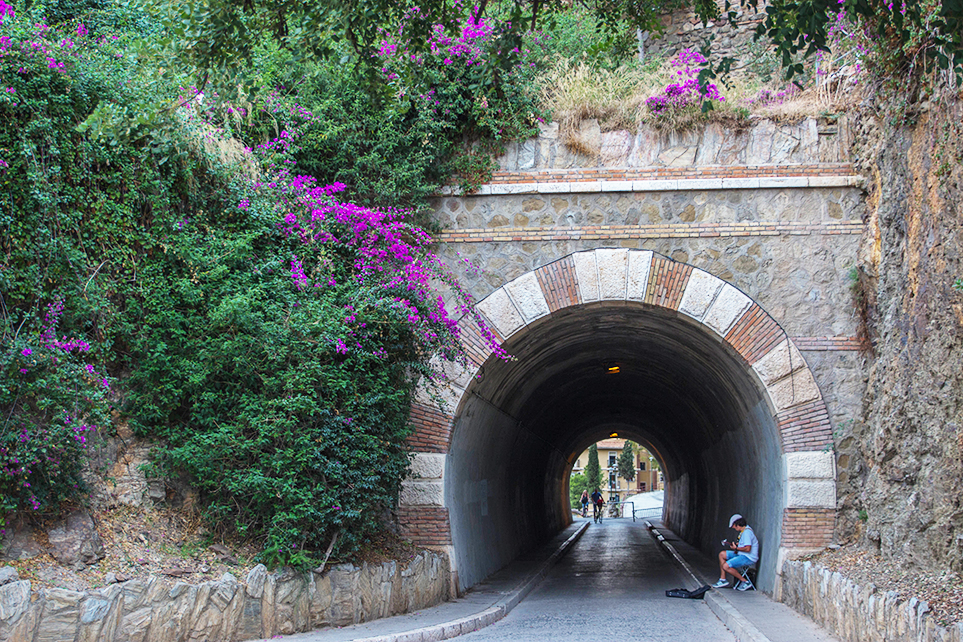
Malaga has so much to offer with its white sandy beaches, great shopping, historical sites, and great entertainment. The social atmosphere allows you to experience musical performances, flamenco dancing, and creative artist while walking old town.
Enjoy your travels! Please read my blogs about other exciting places around the world at Traveling Lens Photography.
If you want to read more about Antalya, follow me on Facebook, Instagram, or Pinterest as I share my journey.
Inshallah (God willing!)


